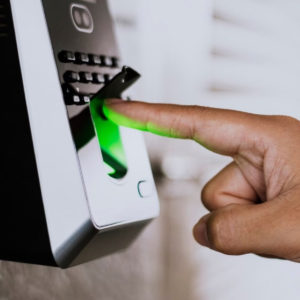26 Jul Attendance Tracker – Benefits of using one.
What is an attendance tracker system?
An attendance tracker is a tool or system used to monitor and keep a record of the presence, absence, or participation of individuals in an event, meeting, class, or at a workplace.
These trackers can come in various forms, from traditional sign-in sheets to more technologically advanced solutions like digital software, applications, or biometric systems. Attendance trackers often record the date and time of each individual’s arrival and departure.
The data collected from an attendance tracker is often used for various purposes, such as:
Payroll:
In the workplace, it helps determine the number of hours an employee has worked, which then feeds into calculating their salary or wages.
Compliance:
In some sectors or for certain roles, there may be legal requirements about the number of hours worked or breaks taken. An attendance tracker can provide evidence of this.
Productivity Assessment:
The data can also be used to assess productivity levels, identify patterns or issues such as frequent lateness or absenteeism, and inform decisions about resource allocation or workforce planning.
Academic Tracking:
In schools, it’s used to monitor student attendance, track participation, and ensure compliance with academic requirements. Regular absences can impact a student’s academic performance and could also signal other issues that need to be addressed.
Event Management:
In events, it helps to track the number of attendees, and in the case of paid events, ensures that only registered or paid attendees are allowed.
Regardless of its form, an effective attendance tracker should be easy to use, reliable, and able to accurately track and report on the attendance data required.
Types of attendance tracking systems.
There are several types of time and attendance tracking systems, each with their own strengths and weaknesses, and the right one for a particular organization depends on their specific needs, budget, and infrastructure. Here are some common types:
Manual Systems:
These include physical timesheets or punch cards where employees manually log their time. While these systems are inexpensive, they can be prone to errors and manipulation.
Digital Timesheets:
These are software-based systems where employees manually enter their hours on a computer or mobile device. This can reduce errors and manipulation compared to physical timesheets, but still relies on employees accurately reporting their hours. Example: A template prepared in Microsoft Excel or Google Sheets that employees or students need to update.
Download attendance tracker templates by ClockIt.
Automated Time Clock Systems:
These systems automate the process of logging hours. Employees might have a card they swipe when entering or exiting the workplace, or there may be a digital clock that they clock in or out on.
Biometric Systems:
These are time and attendance systems that use unique biological characteristics to identify employees. This might include fingerprint scanning, facial recognition, or even retinal scans. These systems are highly secure and can prevent buddy punching (when one employee clocks in for another), but they can be more expensive and involve privacy considerations.
Mobile and GPS-Based Systems:
These systems are particularly useful for remote workers or employees who work at various locations. With these systems, employees can clock in or out from their mobile device, and their location can be confirmed with GPS.
Web-Based Systems or Cloud-Based Systems:
These systems offer time and attendance solutions hosted on the vendor’s servers, which users can access over the internet. The advantage of these systems is that they can be accessed from anywhere and usually offer robust features for tracking, reporting, and integrating with other HR systems. Example: ClockIt
Each of these systems offers different features like overtime calculation, integration with payroll systems, absence management, real-time tracking, reporting capabilities, and compliance features. The best choice would depend on the specific needs and resources of an organization.
Benefits of using an attendance tracking system?
Attendance tracking systems offer several benefits, both to employers and employees. Here are some of the key benefits:
Increased Accuracy:
Attendance tracking systems reduce the risk of errors that can occur with manual timekeeping. They ensure that employees’ working hours are accurately recorded, leading to correct payment for time worked.
Time Savings:
Automated systems significantly reduce the time spent on manual data entry and calculations. HR and management can focus on more strategic tasks rather than spending time on administrative duties.
Cost Savings:
Accurate time tracking can lead to significant cost savings by eliminating overpayments due to inaccuracies or fraudulent reporting.
Improved Compliance:
Attendance tracking systems can help ensure compliance with labor regulations regarding minimum wage, overtime, breaks, and record-keeping.
Increased Productivity:
When employees know their attendance is being monitored, it can lead to increased productivity and punctuality. Plus, the data from attendance tracking systems can help identify trends, such as frequent tardiness or absenteeism, that may need to be addressed.
Fairness and Transparency:
Automated attendance tracking can provide a level of fairness and transparency in the workplace. Employees can be confident that they’re being paid for all their time worked, and managers have a clear, unbiased record of attendance.
Data for Decision Making:
The data generated by these systems can inform business decisions. For instance, recognizing patterns of absence or tardiness can lead to interventions that improve overall team productivity. Or understanding peak times of productivity can inform scheduling decisions.
Integration with Other Systems:
Many attendance tracking systems can integrate with other business software like payroll, HRIS (Human Resources Information System), or ERP (Enterprise Resource Planning), creating a seamless flow of data that can streamline various business processes. Example Odoo etc.
Difference between attendance trackers and timesheets.
Attendance trackers and timesheets serve similar purposes but achieve them in slightly different ways. Both are tools used to record the presence or absence of individuals, typically employees or students, over a set period of time.
Here’s a brief note on their similarities:
Purpose:
Both attendance trackers and timesheets are designed to document the presence, absence, or participation of individuals. They provide a log or record that can be referred to when needed. In the context of a workplace, both tools help to determine payroll, track productivity, and maintain compliance with labor laws. In academic settings, they’re used to monitor student attendance and participation.
Data Collected:
Both systems record similar types of data, such as the date, and typically the start and end times of a person’s presence or participation. This allows them to accurately track the total time spent on a task, in a class, or at work.
Format:
Both attendance trackers and timesheets can be manual or digital. Manual versions often involve paper records, while digital versions can be software-based, using computer programs or mobile apps.
Responsibility:
In many cases, it’s the responsibility of the individual (employee or student) to mark their attendance or fill out their timesheet. This requires a level of self-management and honesty.
However, it’s important to note that while they have these similarities, they’re not identical. A timesheet is generally more detailed and often used for job costing, tracking individual tasks, or billable hours, especially in industries like consulting or freelancing. Attendance trackers, on the other hand, may focus more broadly on presence or absence during specified periods. Attendance tracking may also incorporate more advanced systems, such as biometrics, to verify identity and reduce fraud.
In sum, using an attendance tracking system can be an effective way to streamline business operations, improve accuracy and compliance, and increase overall productivity.



